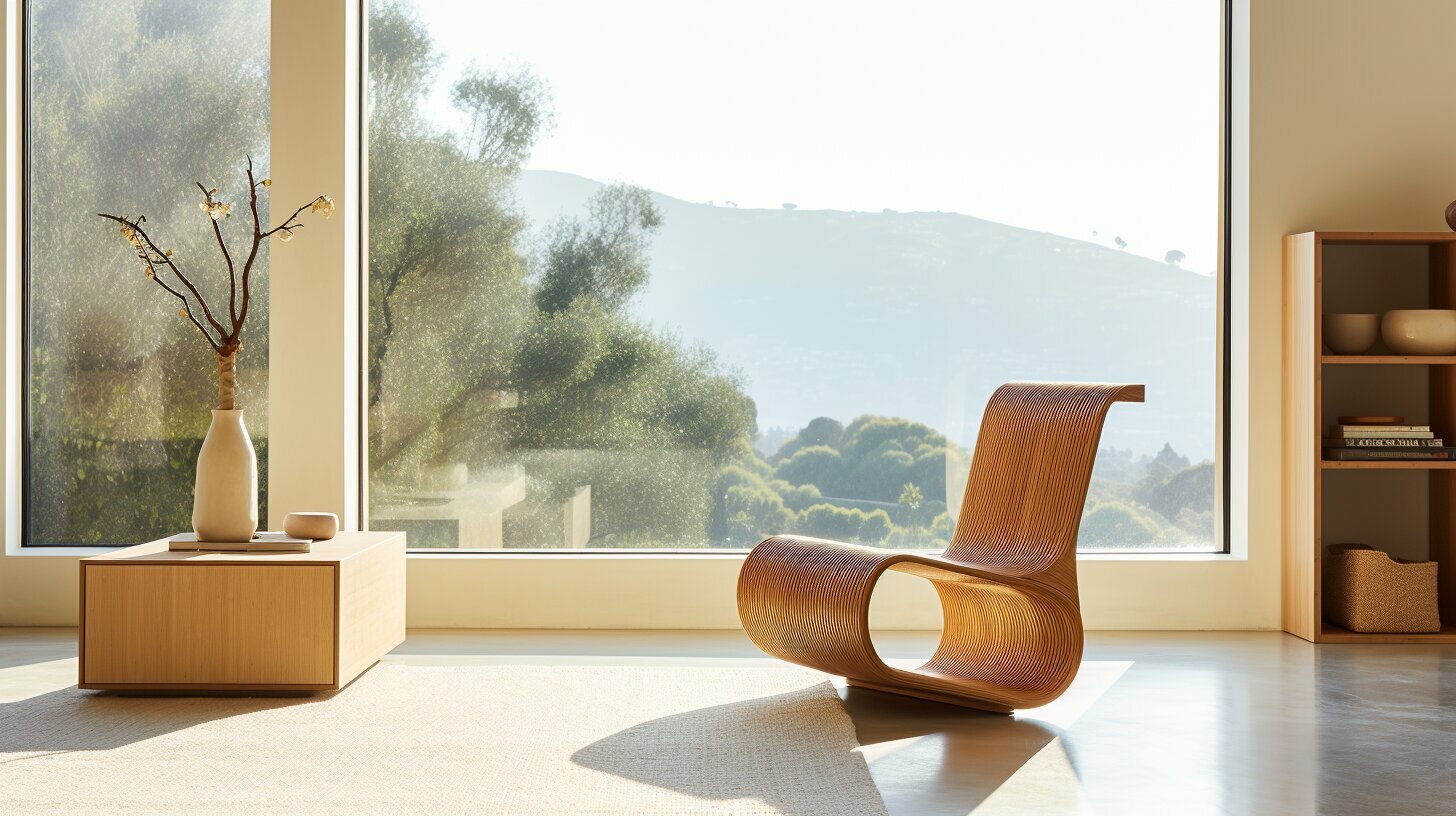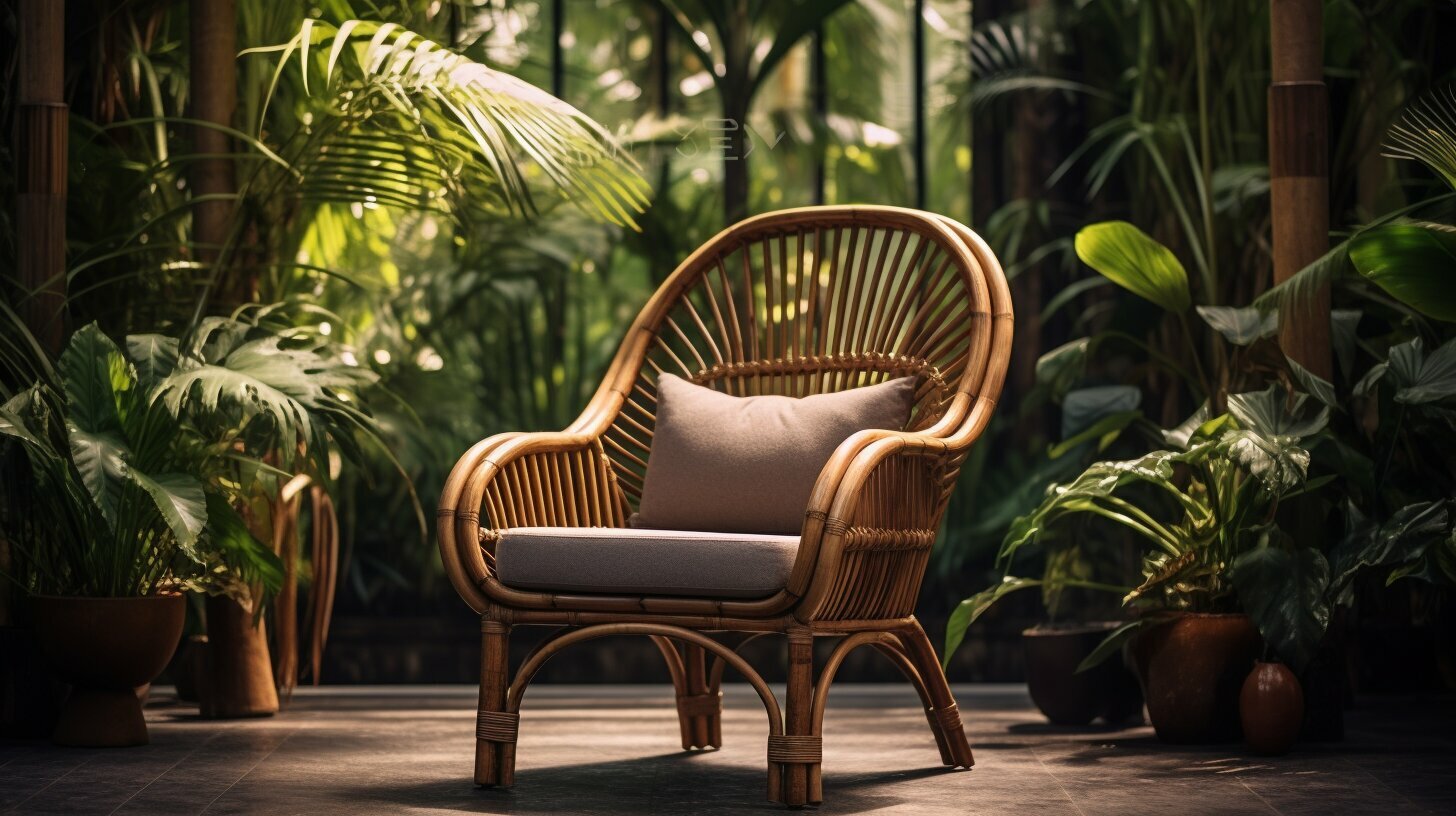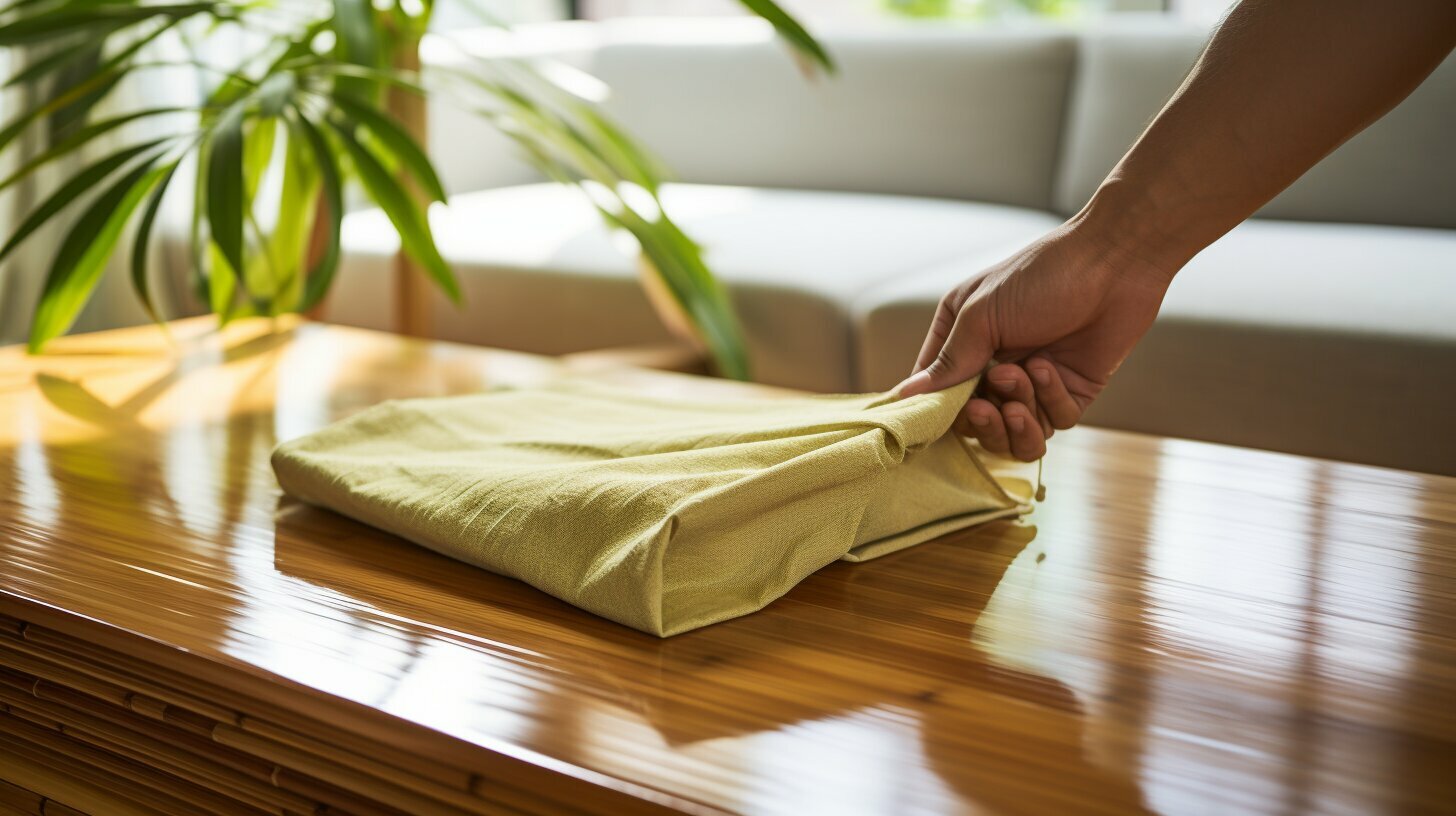🤍 Unmatched Quality, Authentic Craftsmanship
🤍 Unmatched Quality, Authentic Craftsmanship
🤍 Unmatched Quality, Authentic Craftsmanship
Bamboo furniture has become increasingly popular in recent years as an eco-friendly and sustainable option for home furnishings.

But is it really worth investing in over traditional materials like wood, metal or plastic?
In this comprehensive guide, we'll examine is it worth it.
Most likely yes. Bamboo furniture offers several advantages over traditional materials.

For the eco-conscious consumer, bamboo furniture offers a sustainable alternative to conventional furnishings.
When sourced and produced responsibly, bamboo is an environmentally friendly material with many attractive benefits. It offers a clean, contemporary look well-suited to modern homes and apartments.
While it may cost more upfront than cheaper options like pine or composite wood, quality bamboo furniture is a durable investment built to weather decades of use. By purchasing well-made pieces from reputable brands and properly caring for them, bamboo can be an affordable and functional addition to your space.
While no material is perfect, bamboo offers sufficient pros for most homeowners looking for green, aesthetically pleasing furniture.
Following the advice in this guide will help ensure you select durable bamboo pieces with minimal drawbacks. Furnish your home sustainably with beautiful bamboo furniture and you're unlikely to be disappointed with this versatile, eco-friendly choice that should serve you well for many years to come.
Here are some things to think about when deciding:
For eco-conscious consumers, bamboo's sustainability factor may make it worth the price. Its smaller carbon footprint and renewability set it apart.
Those with allergies or chemical sensitivities may find bamboo's natural hypoallergenic properties make it worthwhile.
If style is important, bamboo has a clean, minimalist aesthetic that works well for modern spaces. Its visual appeal may justify the purchase.
In damp environments, bamboo's moisture resistance gives it an advantage over wood furniture prone to warping.
For heavy use pieces that need to endure strain, bamboo's superb strength makes it a smart pick over cheaper woods.
Lower quality bamboo furniture may not hold up. Stick with reputable brands known for quality construction.
As a budget option, bamboo offers great value but be wary of extremely cheap pieces.
When deciding whether bamboo furniture is worth investing in, there are several factors to consider.
These factors will help you evaluate the long-term benefits, environmental impact, versatility, cost-effectiveness, and maintenance and durability of bamboo furniture.
Bamboo furniture is often considered a long-term investment due to its durability and strength.
Unlike cheaper options that may need frequent replacement, quality bamboo furniture is built to last for decades. By purchasing well-made pieces from reputable brands and properly caring for them, you can expect your bamboo furniture to withstand the test of time.

For eco-conscious consumers, the sustainability factor of bamboo furniture makes it worth considering.
Bamboo is a renewable resource that grows quickly and requires minimal water and pesticides to thrive. Its smaller carbon footprint compared to other materials such as wood, metal, or plastic makes it an environmentally friendly choice.
By choosing bamboo furniture, you can contribute to reducing deforestation and the depletion of natural resources.
Bamboo furniture offers versatility and adaptability in terms of design and style. Its clean, minimalist aesthetic works well with modern spaces.
Bamboo can be used to create a variety of furniture pieces, including chairs, tables, cabinets, and beds. Its natural light color and texture can complement a wide range of interior design styles, making it a versatile option for various home settings.
While bamboo furniture may cost more upfront than cheaper materials like pine or composite wood, it can offer long-term cost-effectiveness.
Quality bamboo furniture is a durable investment that can withstand daily use and retain its functionality and appearance over time. By choosing well-made bamboo pieces, you can avoid the need for frequent replacements and repairs, saving money in the long run.

Bamboo furniture requires minimal maintenance compared to other materials. It is naturally resistant to moisture, and warping, making it suitable for various environments, including damp areas.
Regular dusting and occasional cleaning with a mild detergent are usually sufficient to keep bamboo furniture looking its best. With proper care, bamboo furniture can maintain its quality and durability, ensuring it will serve you well for many years.
Considering these factors will help you make an informed decision about whether bamboo furniture is worth investing in.
Assess your needs and preferences, weigh the cost-benefit ratio, and consider the long-term benefits and environmental impact. By prioritizing these factors, you can confidently choose bamboo furniture that suits
Before making a decision about whether bamboo furniture is worth investing in, it's important to evaluate the pros and cons:
Sustainability: Bamboo is a renewable resource that grows quickly and requires minimal water and pesticides. Choosing bamboo furniture contributes to reducing deforestation and the depletion of natural resources.
Eco-friendly: Bamboo has a smaller carbon footprint compared to materials like wood, metal, or plastic. It is a sustainable and environmentally friendly choice for eco-conscious consumers.
Durability: Quality bamboo furniture is built to last for decades. It is a durable investment that can withstand daily use and retain its functionality and appearance over time.
Versatility: Bamboo furniture offers versatility and adaptability in terms of design and style. Its clean, minimalist aesthetic works well with modern spaces, and it can complement a wide range of interior design styles.
Moisture resistance: Bamboo is naturally resistant to moisture and warping, making it suitable for various environments, including damp areas. It is a practical choice for furniture that may be exposed to moisture.
Strength: Bamboo has superb strength, making it a smart pick over cheaper woods for heavy-use furniture pieces that need to endure strain.
Quality variations: The quality of bamboo furniture can vary. Lower quality pieces may not hold up well over time. It is important to stick with reputable brands known for their quality construction.
Price range: While bamboo furniture can offer cost-effectiveness in the long run, it may have a higher upfront cost compared to cheaper materials like pine or composite wood. Extremely cheap bamboo furniture should be approached with caution.
Limited design options: While bamboo furniture offers versatility in terms of style, the design options may be more limited compared to materials like wood or metal. This can be a disadvantage for those seeking a specific aesthetic.
Sensitivity to extreme temperatures: Bamboo furniture can be sensitive to extreme temperatures. Direct exposure to sunlight or extreme heat can cause fading or cracking. Proper care and maintenance can help mitigate these effects.
These are just a few considerations to keep in mind when evaluating the pros and cons of bamboo furniture. Ultimately, the decision will depend on your individual needs, preferences, and budget.
Before you buy the bamboo furniture, it's important to gather all the necessary information to make an informed decision.
Here are some key things to consider:
Assessing Your Needs and Preferences: When evaluating whether bamboo furniture is worth investing in, it's important to consider your specific needs and preferences. Think about the style and aesthetic you desire for your space, as well as your functional requirements. Consider factors such as the size, type, and design of furniture pieces you need, as well as how they will fit into your existing decor.
Weighing the Cost-Benefit Ratio: Take into account the cost-benefit ratio of bamboo furniture. While it may have a higher upfront cost compared to cheaper materials, consider the long-term benefits it offers. Assess whether the durability, sustainability, and aesthetic appeal of bamboo justify the investment over other options. Calculate the potential savings in terms of replacement or repair costs over time.
Considering the Life Cycle of Bamboo Furniture: Evaluate the life cycle of bamboo furniture, including its production, use, and disposal. Bamboo is known for its rapid growth and sustainability, but it's essential to consider the environmental impact of its production and transportation. Look for bamboo furniture that is certified by reputable organizations or brands that prioritize sustainable practices throughout the supply chain.
Exploring Alternatives: While bamboo furniture has its advantages, it's worth exploring alternative materials and furniture options to ensure you make the best choice for your needs. Consider other sustainable materials like reclaimed wood, rattan, or recycled plastic if they align better with your preferences or functional requirements.
Factors to Prioritize in your Decision: When prioritizing factors in your decision-making process, consider what matters most to you. If sustainability is a top priority, focus on aspects like the environmental impact and renewability of bamboo. If durability and longevity matter most, prioritize quality construction and reputable brands. By identifying your key factors, you can make an informed decision that aligns with your values and needs.
Remember to take your time in making a decision, do thorough research, and compare different options before finalizing your purchase.
By considering these factors and assessing your needs and preferences, you can confidently choose the best bamboo furniture that fits your requirements and brings sustainable beauty to your home.
Not all bamboo furniture is created equal when it comes to quality. Follow these tips when shopping around:
Opt for solid bamboo boards rather than thin veneers which can warp or peel over time. Plyboo and laminated bamboo last longer.
Check that edges are smoothly sanded with no splintering. Holes from nodes should be filled for a smooth surface.
Look for furniture with mortise and tenon joinery for stability and strength. Nails or staples alone allow wobbling.
Seek out water-based finishes and adhesives with zero or low VOCs to avoid off-gassing chemical pollutants.
With dining sets, check reviews to ensure chairs don't feel overly rigid or uncomfortable without cushions.
For outdoor sets, make sure the bamboo is specially treated for weather resistance to prevent fading or damage.
Consider combining bamboo with other eco-friendly yet softer materials like organic cotton cushions for a blended aesthetic.
When possible, opt for Fair Trade certified brands that ensure worker safety and ethical bamboo harvesting practices.
If everything has been spot on with your decision-making process so far, it's time to move forward and start shopping for your bamboo furniture. Keep in mind the tips mentioned above to ensure you choose high-quality pieces that align with your preferences and values.
Take your time to compare different brands and options, read reviews, and make an informed decision. Remember, investing in sustainable and durable furniture is worth it in the long run.
Now that we've covered the considerations, decision-making process, and shopping tips for bamboo furniture, let's address some frequently asked questions:
Some alternative materials to bamboo furniture include:
Reclaimed wood: This is wood that has been salvaged from old buildings or furniture and repurposed to create new pieces. It offers a unique and rustic aesthetic.
Rattan: Rattan is a natural vine-like material that is often used for woven furniture. It is lightweight, durable, and has a tropical vibe.
Recycled plastic: Furniture made from recycled plastic is a sustainable choice that helps reduce plastic waste. It can be molded into various shapes and styles.
These materials provide alternative options for those who may have different preferences or functional requirements than what bamboo furniture offers.
Bamboo furniture can complement a variety of decor styles. Its natural, organic look works well in bohemian, tropical, or coastal-inspired interiors.
The light color and clean lines of bamboo furniture also make it a good fit for minimalist or Scandinavian designs. Additionally, bamboo can add an element of warmth and texture to modern or contemporary spaces. With its versatile and timeless appeal, bamboo furniture can be incorporated into different decor styles with the right styling and accessories.
With its versatile and timeless appeal, bamboo furniture can be incorporated into different decor styles with the right styling and accessories. Whether you have a bohemian, minimalist, tropical, coastal, or contemporary design, bamboo furniture can complement your chosen style.
In conclusion, when shopping for bamboo furniture, it's important to prioritize factors such as sustainability, durability, and quality construction.
Look for solid bamboo boards, smoothly sanded edges, and furniture with mortise and tenon joinery.
Opt for water-based finishes and adhesives with low VOCs and consider Fair Trade certified brands. Take the time to research different options and compare reviews before making a decision. With proper consideration and a thoughtful approach, you can choose high-quality bamboo furniture that aligns with your preferences and values.


